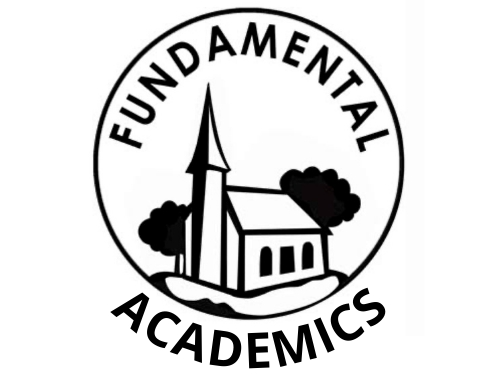May 21, 2023
The Troubles, With Music: Ulster Punk And British Independents by Richard Lawrence Jordan
Reviewed by Craig Campbell
Can creative anger temper sinister times? Richard Lawrence Jordan’s new book chronicles the rise of Ulster punk in the late seventies. Surrounded by sectarian violence and breaking glass, yet the kids were still United.
Some books ease their way into delicate material. When discussing the Ulster troubles at their peak and its tense music scene, however, there’s no way of not getting a glimpse at one of Dante’s six circles of hell eventually. It arrives early in this book in the form of The Miami Showband. Already the subject of a harrowing documentary, three of the bands murders at the hands of the paramilitary organisation The Ulster Volunteer Force in 1975 sent shockwaves through the Northern Irish music scene and added to the growing xenophobia across the water. Consequently, as Jordan describes it, ‘the jaundiced view of the British music press’ kicked in and they veered into a kind of hysteria, setting in motion a scaremongering campaign which led to a near boycott from musicians touring the area from 1975 through to 77.
In ‘Troubles, With Music: Ulster Punk And British Independents’ Jordan traces the seeds of recovery, through a youth culture movement that eschewed traditionalism and politics for a different sort of revolution. The energy of punk may have been rooted in the Kings Road fashion houses in England and been an odd mixture of garage rock and the French expressionist poets in the US – but in Northern Ireland, it was more polemic than narcissistic, it stood for a kind of hope. All it needed was the type of Teflon souled individual willing to promote and run with it. No mean feat in the Ireland of the time, still veering between proletarian attitudes and this new musical movement.
Jordan credits Belfast’s Terri Hooley as one such conduit. The godfather of Irish punk, who had once gotten into a fistfight with John Lennon over his political views, was pretty much the perfect guy for the job. He would eventually go on to form the Good Vibrations label, a home for the punk bands of Belfast and beyond to swear their allegiances to. Those same bands and others more singularly minded are profiled in this book in superb detail, especially Northern Ireland’s biggest hitters. Jordan treads the familiar paths of Stiff Little Fingers and The Undertones. He also springs surprisingly reveals too. How for instance The Undertones contract with American giants Sire did more to promote Ulster punk back home than anything and how SLF’s Achilles heel became not so much their anthems about the troubles as their lack of them once they’d achieved their success. It’s this constant battle between the homeland and the London music industry which is a theme of this book ( especially for those two outfits ). The irony being that neither band really gained anything artistically by commercial success. In SLF’s case in fact it practically halted them dead in their tracks.
Stiff Little Fingers really are the heart and soul of this book. They were the band after all who took on the mantle of social awareness with crashing riffs to highlight the troubles in their own unique way. As a statement of intent, Suspect Device (their debut single) still roars out of the traps with its teeth bared over forty years later. SLF we’re an undiluted product of their place and time and their Inflammable Materials album would quickly elevate them into being one of the UK’s premier punk bands. ‘The Fingers described a murderous tragedy that most citizens only cared about after a domestic bombing,’ Jordan writes. Not every Irish punk band had such a politicised vision. One of the great joys of books like this is uncovering bands who may now have disappeared under the cultural radar but still burned brightly for a moment before their Warhol quarter clock ticked to midnight. The Defects were such a band. Part Ramones, part Adams family, they resided in an unused mortuary in London and had a more sanitised view of their homeland. They also had a sense of humour too. Indeed, Irish punk rock wasn’t all about being socially aware and serious. From The Virgin Prunes ( the scenes seminal transvestite miscreants ) to the fantastically named One Fat Antelope, Jordan’s book uncovers the minutiae of the Irish scene, which at times seems to take second place to the more serious issues he wants to uncover. There are really two narratives at work here and ultimately they kind of rub up and repel each other.
The book leaning into social studies in fact is its slight downfall. More concise coverage of the Ulster punk movement without the stacked political elements would have been fine. There’s an over-precision in explaining each strand of this that takes away from the energy of the bands somewhat. With such a vast array of characters it might have been better suited as an oral history, an Irish ‘Please Kill Me’ if you will. Perhaps it’s a question of access of course. As a self-published book, Jordan’s account doesn’t have that first-hand xerox of authentic voices and photography and as many meticulous points as he draws between A and B, it always feels like his view rather than the view, leading to a rather lopsided history lesson.
Which shouldn’t really detract anyone from hunting down this book. It’s very well written and with a careful edit and conservative funding, this passionate tale of punk rock rising through nefarious times could still easily find a home with a mainstream publisher. Perhaps it should too. The troubles have such a grim outline, forever taunting its social, political and cultural history – that inspirational movements like the Ulster punk uprising should be celebrated a whole lot more than it has been. It’s the least those fearless souls who played through such harsh times deserve.
